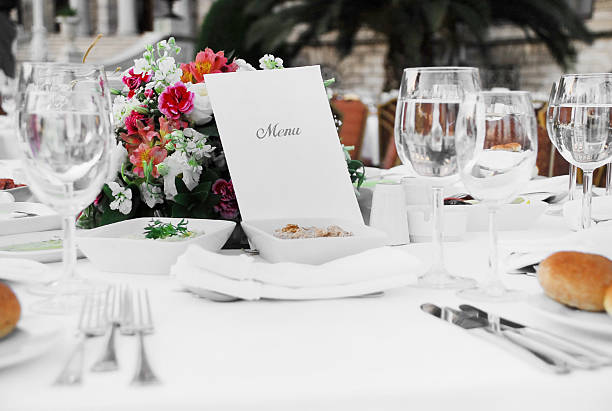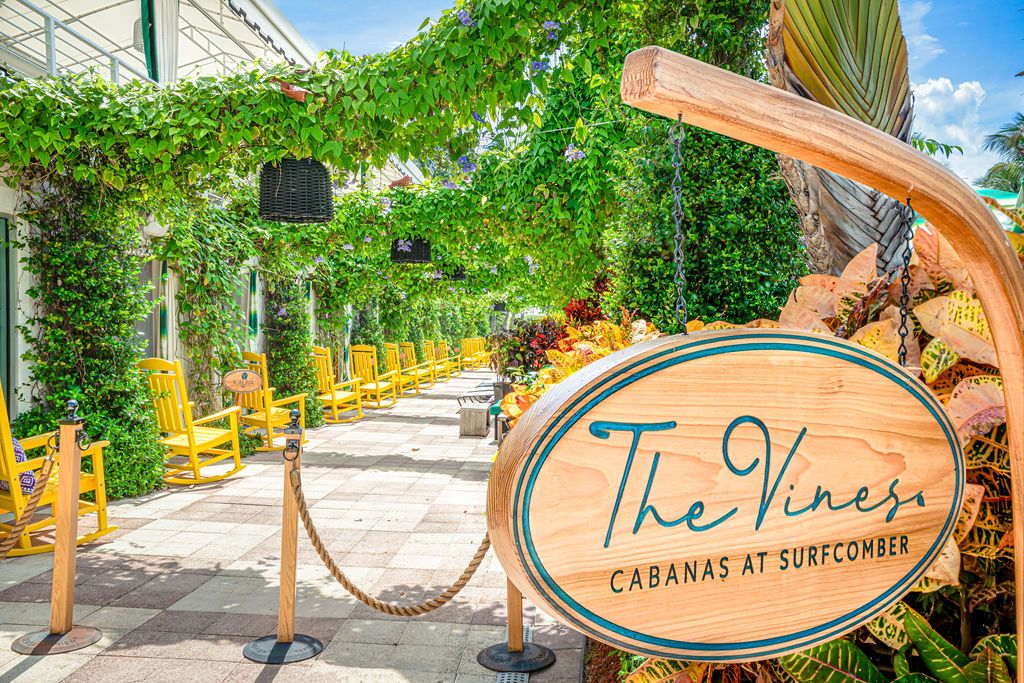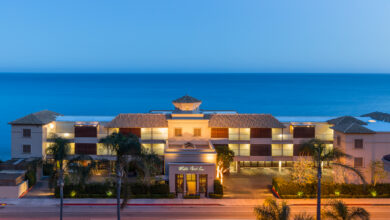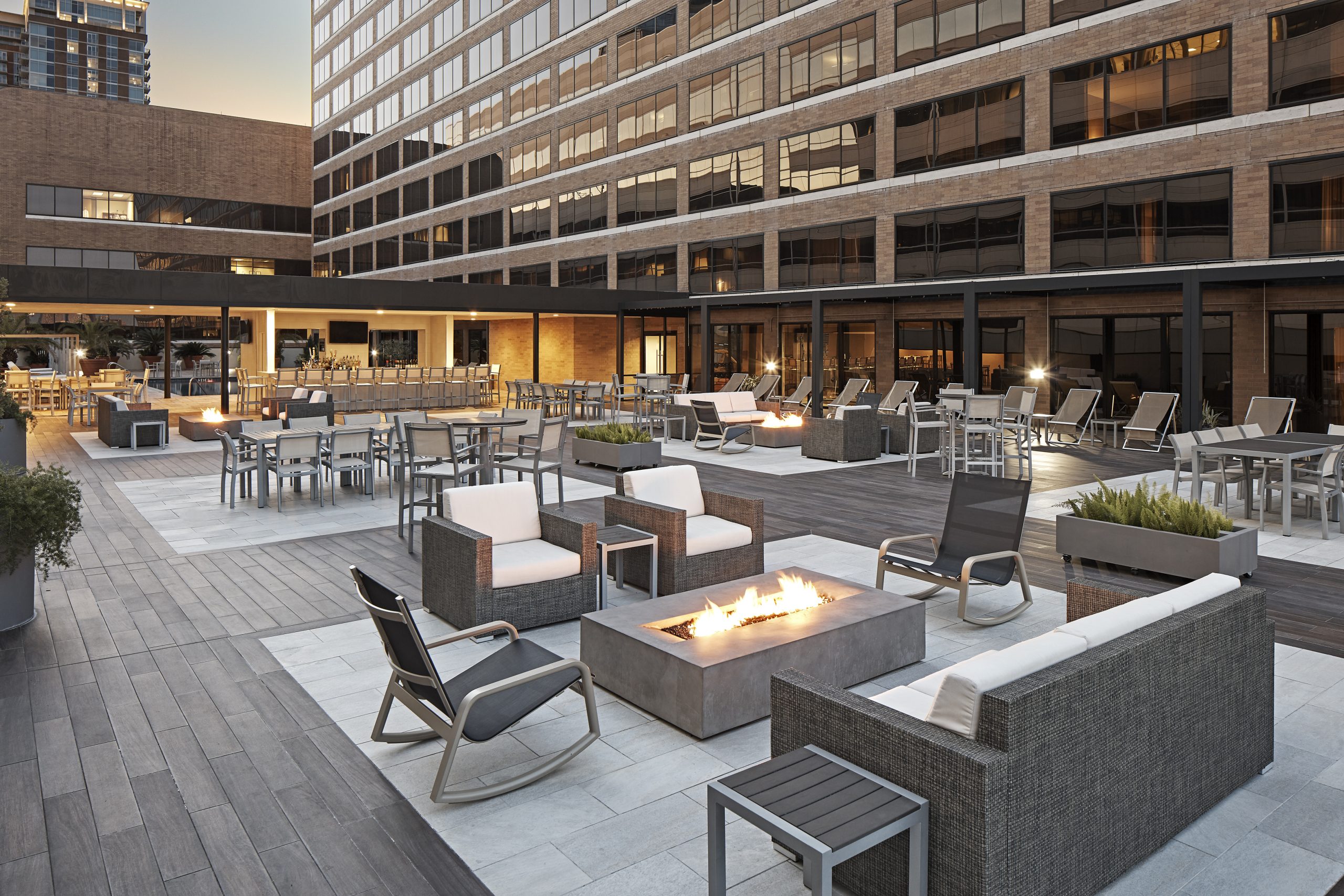
Engaging with Executives: Valencia Hotel Group Vice President of Branding and Design Brandi Montgomery
By David Berman | June 6, 2023
Our Engaging with Executives series consists of one-on-one Q&As with executives around the hospitality industry, breaking down recent trends and news in their companies and the industry as a whole.
Today’s interview is with Brandi Montgomery, Valencia Hotel Group’s Vice President of Branding and Design. Montgomery has been with Valencia for over 15 years.
In this Q&A, Montgomery discusses her team’s design process, covering how they incorporate local touches into each property and the importance of dynamic outdoor spaces.
Hotel Interactive: How do you and your team approach the design process?
Brandi Montgomery: I think it’s really a collaborative effort. We’ve got a very talented development team that works through the design process from start to finish. So we’ve got more of the visionaries and the design minded people to the more practical minded people and the operational people who are there on a daily basis all collaborating together and having input so I think that’s what makes it not only beautiful places, (but they) function really well as well. So yeah, we call it sausage making. We sit down and it’s long meetings, and we spend hours talking about the littlest details because details are so important to us, all the things that guests experience.
HI: Would you say that there are any core elements to design, maybe pillars that you place an emphasis on at all locations?
BM: I don’t know if there’s one thing specifically. We really start out with a blank slate, clean sheet of paper, but I think the one thing that’s really important to us is creating that sense of place. We pay a lot of attention to what’s around the property, the history of the property and really dive into the culture. It’s important for us to carry out those elements throughout the property and the design. I would say creating that sense of place is probably the one really important factor to us.
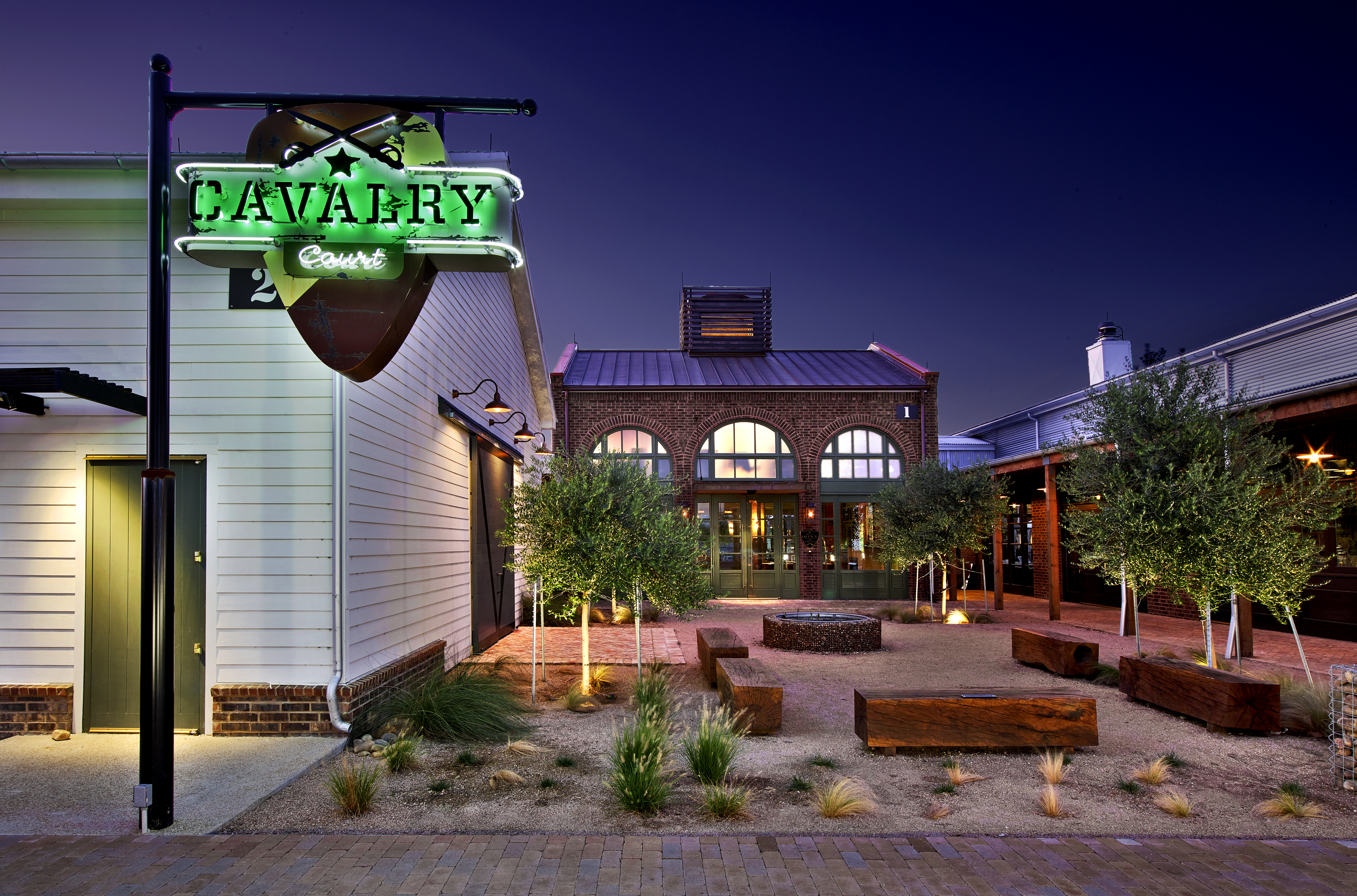
HI: How do you go about incorporating local touches into each location? You talked about the history of a property, the environment, the culture, if you could just go deeper into that process and why is that important to you to make sure that each property reflects the community that it’s in?
BM: First of all, we do our due diligence on the land and what was this land 50, 100 years ago? What is it known for? We really want to relate to the locals. We want it to be a place that the locals enjoy as well. We want it to be a place that the locals say, “you’ve got to stay there.” So again, creating that sense of places is so key for us.
But for me, whenever I’m starting out and looking at a market, I dive into the history. I mean, I do everything from joining local Facebook groups to see what’s important to (people) and, and read through all the history and visit the museums. We’re boots on the ground, for sure. There’s so many hoteliers that design site unseen, and that’s not the way we do things. So yeah, it’s just learning the land, learning the culture, and it’s important for us to carry those elements throughout the different spaces without being over the top or in your face with it.
HI: Would you mind sharing any favorite examples that you have of properties where you especially incorporated local touches?
BM: Oh my gosh, there’s so many. Cotton Court is our most recent “court” property that we did. It was really so neat. We visited the local cotton museum in Lubbock. I think our entire team spent probably two hours there just going through the museum and having the guy that runs the museum just explain Lubbock and the history of Lubbock and the history of cotton and how important it is to Lubbock. It was such a huge part of the land there. I mean, when you get off the airplane, you see cotton fields. That’s something that people may not realize if they’ve never visited Lubbock, and they’re just creating a hotel that’s in Lubbock. Unless you’re actually there on the land, you may not know that.
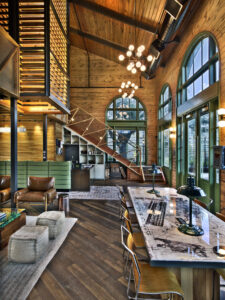
So I think that’s just one. There’s so many things. I can’t think of one specific thing. Calvary Court, same thing, we visited The Corps at (Texas) A&M. We got to visit their stables and where the property is that was their original training grounds, that they used to practice out there. So I mean, there’s so many cool stories that we dive into and how we come up with the branded theme and the name of the property.
HI: How would you say that research and attention to detail adds to the guest experience?
BM: Calvary for instance, so many times I have heard guests mentioned or I’ve seen on TripAdvisor comments, or Google reviews, the attention to detail is just over the top. That always just makes me feel so good, because it’s true. We may spend three hours thinking about what the tissue box cover is going to look like. So, again, those attention to details are very important to us, and I think the reward is just seeing the guest experience and enjoying it, reading the comments and reading the reviews. It certainly pays off.
HI: Shifting a little bit to talking about outdoor spaces at Valencia properties, First of all, could you broadly talk about the design process for those and how that maybe differs at all to internal design? And in your opinion, how important is designing dynamic outdoor spaces to a property?
BM: So I think for the courts projects they’re very important, and even your more typical style hotel I think that you’ve got courtyard areas that are just as important. For the courts, I mean, they’re very important. We’ve put so much design emphasis on those outdoor spaces and we create those spaces for guests to experience just like you would internal spaces. We’ve always done that.
I don’t know if (the design process) really differs. I think that the process is really the same. It’s just how much emphasis we put into it. I think there’s obviously more emphasis on the courtyards versus the Valencias and our more internal hotels, but I’m not sure that the process really differs.
HI: What do guests expect now for outdoor spaces at a property, espcially in a post-COVID world?
BM: It’s funny that you mention that, but we started designing the court concept and the outdoor spaces pre-COVID. I certainly don’t think that we’ve shifted or anything has changed where we are today, but it’s been so nice to have all those outdoor spaces and the fresh air. I think it’s very crucial, and it’s very important to guests. They absolutely love being able to just set their bags down, whether they’ve been in meetings all day or even if they’re there vacationing with their family, but just … be able to go and have that sense of discovery throughout the courtyard. Grab a cocktail, and here’s some live music playing at one end and a fire pit going at the other end. It’s very unique and special.
This interview has been lightly edited for length and clarity.

